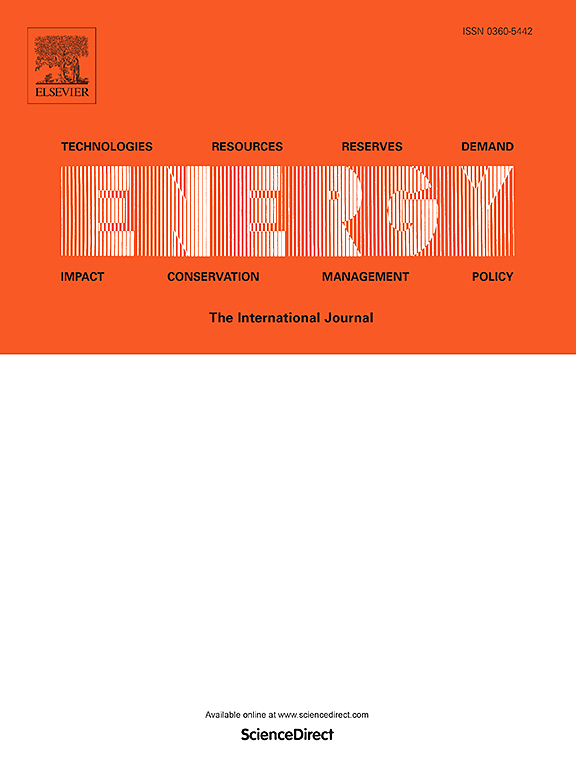Study on gas–particle flow and combustion stability of an improved burner for different boiler loads
IF 9
1区 工程技术
Q1 ENERGY & FUELS
引用次数: 0
Abstract
This study aimed to enhance the flexibility capability of thermal power units to address challenges in integrating renewable energy into the grid, especially stable combustion at low loads in faulty coal–fired boilers. A new improved swirl burner was developed and successfully applied to a 700 MW boiler. This paper enhanced testing conditions and focused on varying boiler loads. Gas–solid flow characteristics under different boiler loads were acquired through a cold experiment. Industrial measurements were conducted on–site, revealing gas temperature distribution. The burner could form an annular recirculation zone at 15%–20 % rated loads, demonstrating its potential for stable combustion at ultra–low loads. Boiler load significantly affected velocity distribution in primary and secondary air. The reflux ratio increased as the load decreased. At low loads, there was increased negative particle volume flux and recirculation. Load had little effect on the burner central temperature but correlated more strongly with the secondary air area temperature. Coal ignition distance was approximately 2.0 m in the center and near the exit in the secondary air region. Temperature differences in the secondary air area were minimal between 522 MW and 645 MW but relatively higher at 444 MW. Cold–state experiment results effectively explained hot–state phenomena.
求助全文
约1分钟内获得全文
求助全文
来源期刊

Energy
工程技术-能源与燃料
CiteScore
15.30
自引率
14.40%
发文量
0
审稿时长
14.2 weeks
期刊介绍:
Energy is a multidisciplinary, international journal that publishes research and analysis in the field of energy engineering. Our aim is to become a leading peer-reviewed platform and a trusted source of information for energy-related topics.
The journal covers a range of areas including mechanical engineering, thermal sciences, and energy analysis. We are particularly interested in research on energy modelling, prediction, integrated energy systems, planning, and management.
Additionally, we welcome papers on energy conservation, efficiency, biomass and bioenergy, renewable energy, electricity supply and demand, energy storage, buildings, and economic and policy issues. These topics should align with our broader multidisciplinary focus.
 求助内容:
求助内容: 应助结果提醒方式:
应助结果提醒方式:


